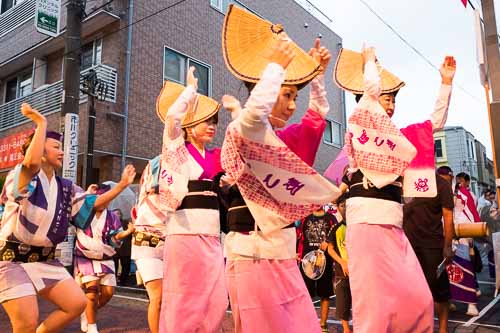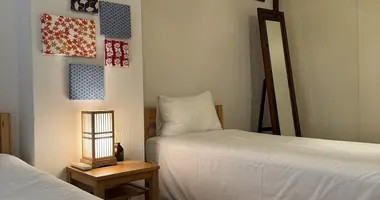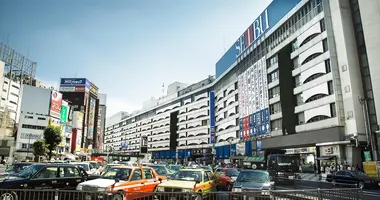Koenji: exploring Tokyo's retro and bohemian neighborhood
- Published on : 28/02/2024
- by : Japan Experience
- Youtube
Tucked away in western Tokyo, Koenji is a neighborhood that marches to the beat of its own drum. With a liberal, bohemian vibe, Koenji grew out of Japan's radical student movements of the 1960s and has retained an alternative, counterculture character to this day. Known for its vintage shops, independent music scene, quirky bars, and the massive Awa Odori Festival in summer, Koenji attracts locals and visitors looking for a slice of pre-boom Japan and a lively, artistic spirit that's increasingly hard to find in modernized Tokyo.

The history and background of Koenji
Koenji's roots as a haven for bohemians and artists can be traced back to the aftermath of the Edo era of Japanese history, when the area was a sleepy farming village along the highway connecting the capital with present-day Yamanashi Prefecture. Following the Great Kanto Earthquake of 1923, Koenji saw an influx of small merchants and laborers displaced from central Tokyo who started building up the local economy with shops, eateries and bars.
In the 1950s, Koenji became known for its many tea and coffee houses (kissaten), as well as the start of the Awa Odori Festival. But it was in the 1970s that Koenji really came into its own as a counter-culture hub, becoming the birthplace of the Japanese punk scene alongside nearby Nakano. Attracted by the cheap rents and youthful vibe, artists and musicians flocked to the area, establishing Koenji as Tokyo's capital of underground cool.

Shopping in Koenji: vintage clothing stores, record shops and more
Koenji is one of Tokyo's top destinations for vintage and secondhand shopping, with only Harajuku and Shimokitazawa rivaling it for selection and variety. The main drags for browsing retro threads are PAL Shopping Street and Look Shopping Street just south of Koenji Station.
Far from hawking just grunge, most of the vintage merchandise here is in excellent condition, including well-priced, cutting-edge pieces that fashionistas seek out. Along with clothing, shoppers can explore Koenji's many secondhand record and music stores, a collector's paradise full of rare items, as well as quirky bookstores and even vintage toy shops.

Pal Arcade, Koenji, Tokyo
Koenji's lively music scene and underground live houses
As the birthplace of punk in Japan, Koenji has a thriving live music scene based around its many "live houses" - small, often dingy clubs where up-and-coming bands cut their teeth. Legendary venues include 20000V (pronounced "ni-man den-atsu"), which shuttered in 2009 but reopened as Niman Denatsu, and the long-running Penguin House, a cramped basement space plastered with band stickers.
Other notable live spots include Muryoku Muzenji, an artsy underground joint decorated with a mishmash of posters and streamers, and Sound Studio Dom, a practice space that hosts punk and experimental gigs. Though the heyday of Koenji's punk scene has passed, the spirit lives on through the diverse range of indie, underground and alternative acts that still call the neighborhood's clubs home.
The famous Koenji Awa Odori summer dance festival
Every August, Koenji lets its hair down for the Awa Odori Festival, a massive dance celebration that draws over 10,000 participants and up to a million spectators. The Koenji version of this traditional dance from Tokushimaprefecture features choreographed troupes of dancers and musicians parading through the streets to the sound of drums, flutes and shamisen.
Dating back to 1957, the festival was started as a way to revitalize Koenji's shopping streets and has grown to become one of Tokyo's top three summer matsuri events. Spectators are encouraged to join in the dancing and revel in the electrifying atmosphere as the neighborhood is swept up in two days of joyous, non-stop celebration.
Where to eat and drink in Koenji: from cheap eats to quirky themed bars
Koenji is a paradise for budget-friendly dining and drinking, with alleyways packed with cozy izakayas, international eateries, and quirky bars. Under the train tracks north of Koenji Station is Nakadori Shotengai, home to a glorious jumble of yakitori stalls, karaoke boxes, and watering holes catering to indie types and subcultures.
Some standouts include Persian belly dance bar BolBol, punk-rock dive Bar Secret Base Zero, and tiny but chic Natural stand bar. During the day, hole-in-the-wall coffee shops and homey teishoku (set meal) restaurants are perfect for a cheap, tasty lunch, while snacks like fried croquettes, taiyaki, and tofu doughnuts can be grabbed from streetside stalls.
Visiting shrines and temples in Koenji
Though often overlooked by visitors more interested in Koenji's subcultures, the neighborhood is also home to a number of atmospheric Buddhist temples and Shinto shrines.
On the south side of the station lies a cluster of a dozen or so small temples, including Chosenji, known for its lovely seasonal flowers and huge Kannon statue, and Horinji with its 3.6 meter tall Jizo Bosatsu figure. A few blocks east is Mabashi Inari Shrine, fronted by a dramatic stone torii gate carved with a pair of dragons and home to both Buddhist and Shinto deities.
Nishishozenji Temple, Koenji, Tokyo
How to get to Koenji and make the most of your visit
Koenji is easily accessed from central Tokyo via the JR Chuo Line, just two stops west of Shinjuku Station (4 minutes, ¥160). The neighborhood's main attractions are centered around the compact north and south sides of Koenji Station.
To make the most of your visit, come on a weekend afternoon to browse the vintage stores, explore the temple district, and bar-hop or catch some live music in the evening. Time your trip for late August to experience the Awa Odori festivities, or drop by on the 4th Saturday of each month for the Teenage Kicks flea market outside the station's north exit. No matter when you visit, Koenji offers a heady taste of Tokyo's underground cultures and retro charm.






























